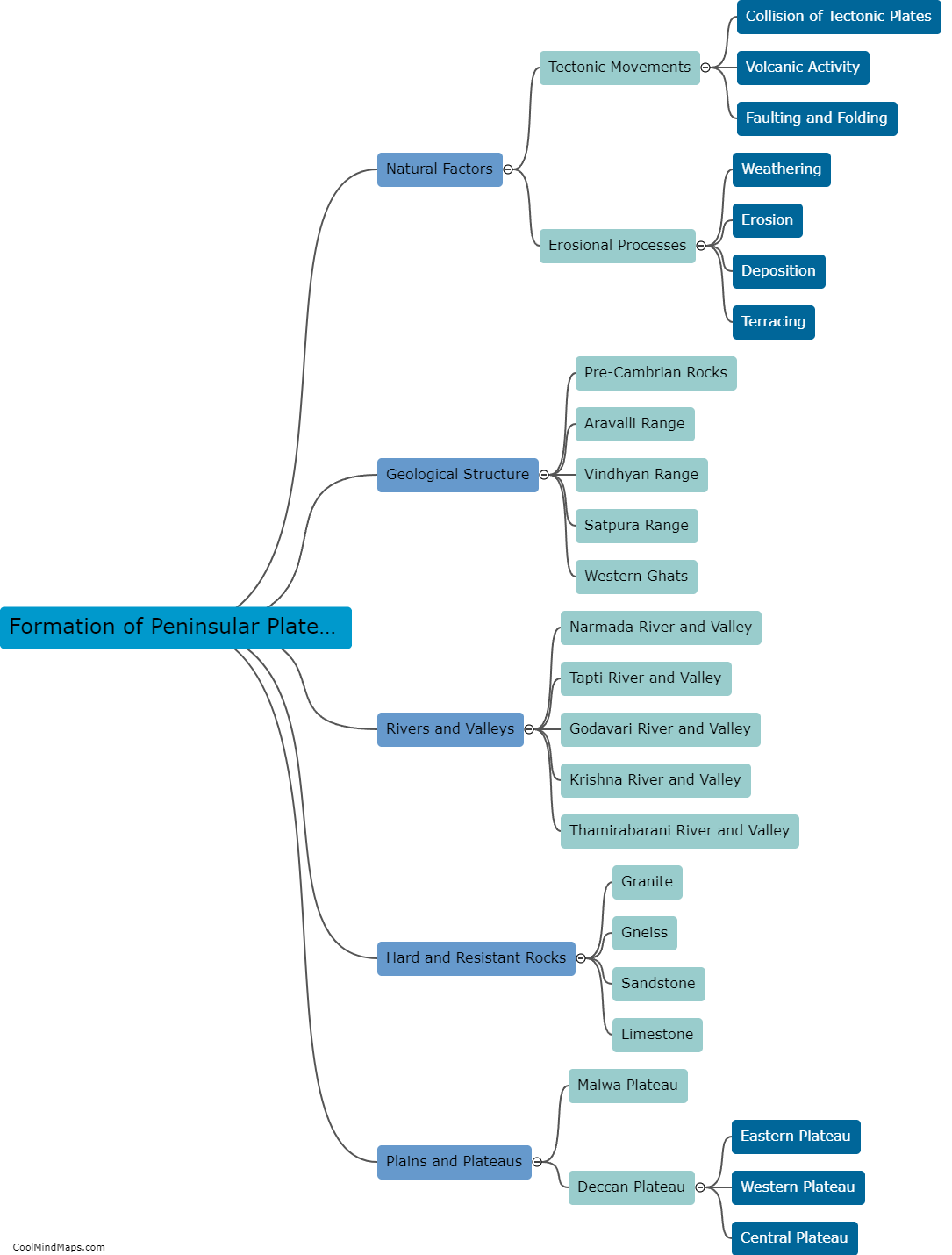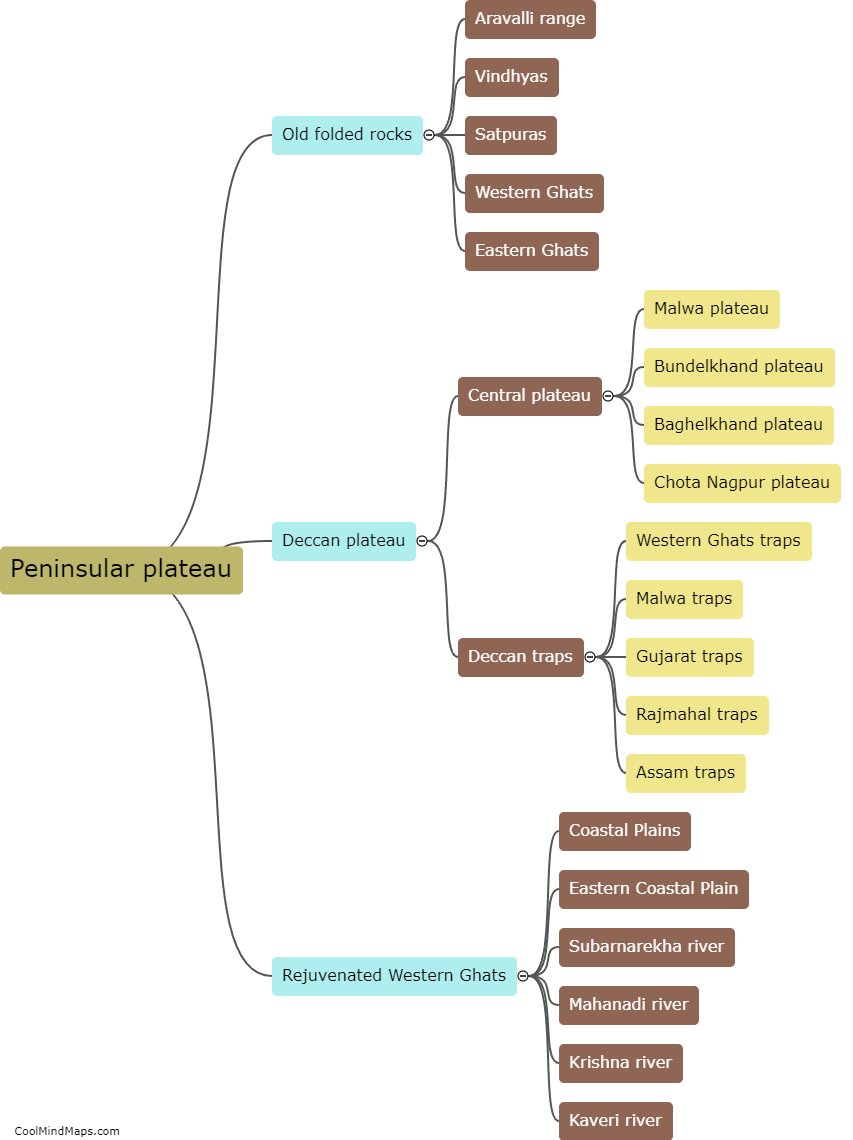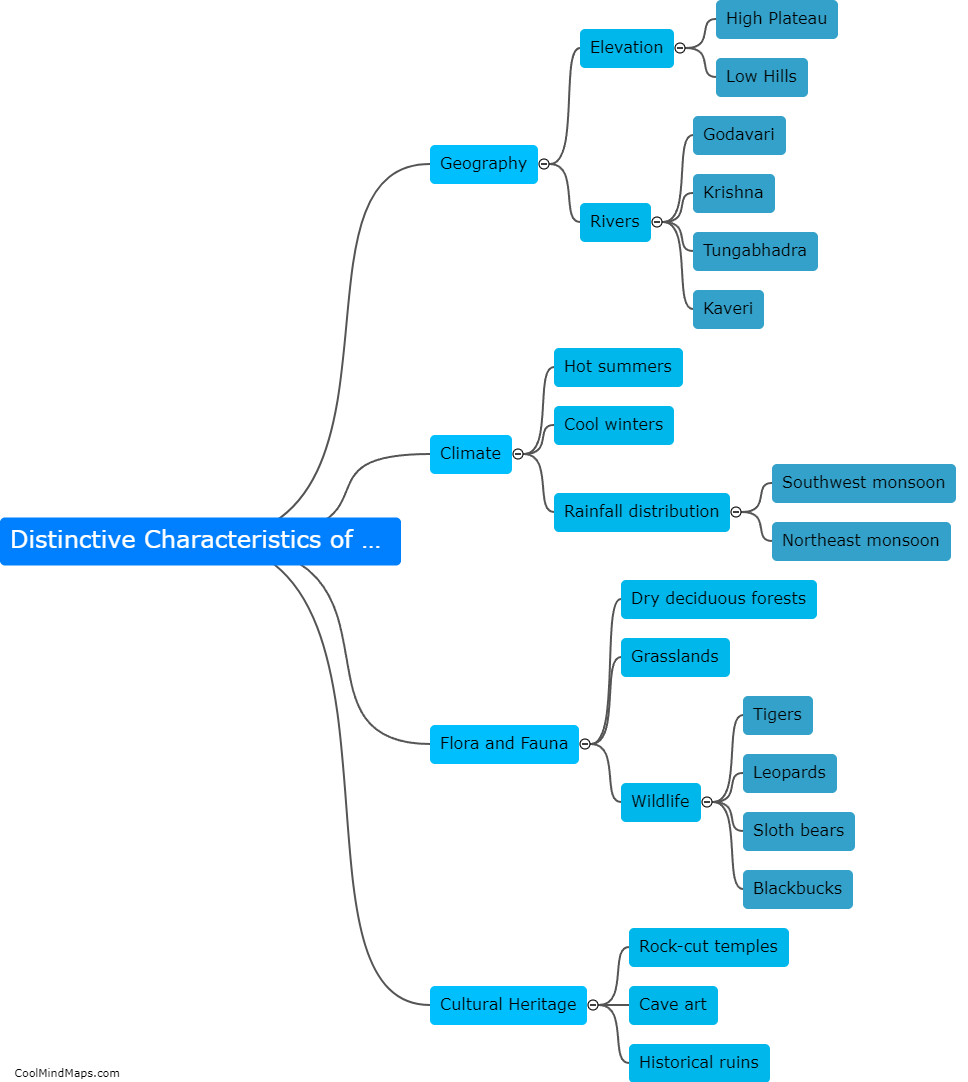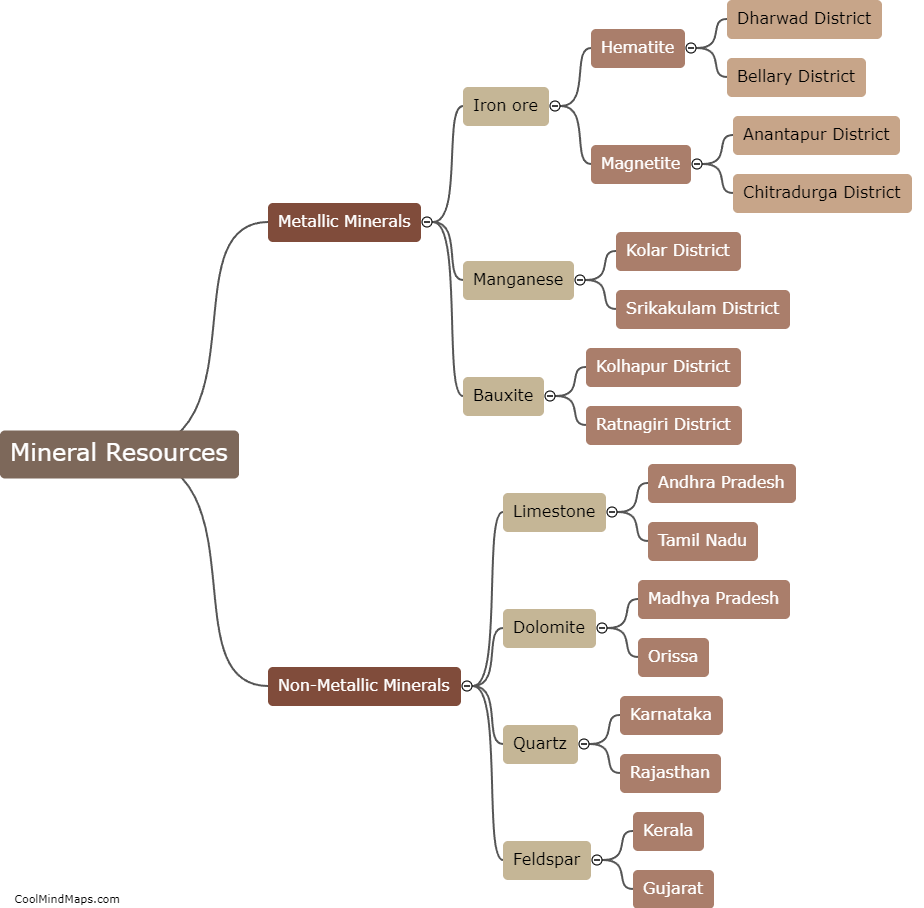How did the peninsular plateau form?
The peninsular plateau, also known as the Deccan Plateau, in India is a vast elevated region that was formed through a series of geologic events over millions of years. It originated during the Precambrian era, around 3 billion years ago, when tectonic forces caused the ancient supercontinent of Columbia to break apart. As the landmass drifted apart, volcanic activity began to occur, resulting in the accumulation of layers of lava and sediment. Over time, these layers compacted and solidified, forming the hard rock structures that make up the plateau. The peninsular plateau also experienced uplift due to the collision of the Indian and Eurasian tectonic plates around 50 million years ago, further shaping its topography. Today, the peninsular plateau is characterized by its flat-topped hills, extensive lava plateaus, and deep river valleys, providing a unique geographical landscape in India.

This mind map was published on 1 February 2024 and has been viewed 108 times.











